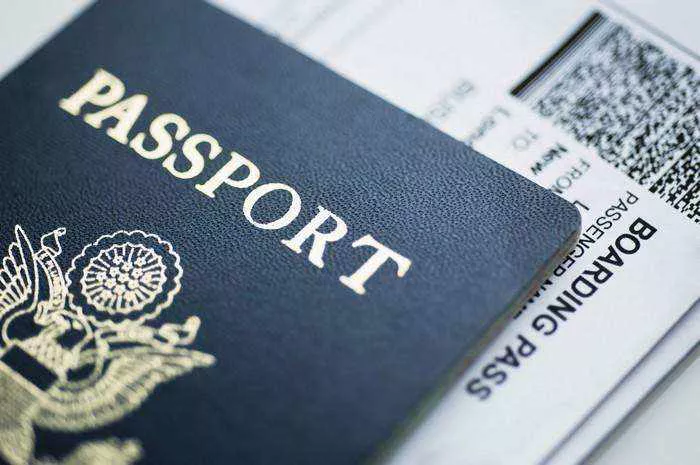In the dynamic landscape of global employment, the United States remains a coveted destination for professionals seeking career opportunities. However, securing the right to work in the U.S. necessitates a thorough understanding of its visa system, which is complex and subject to frequent updates and revisions. For individuals aspiring to work in the U.S., navigating the intricacies of the visa process is paramount to achieving their career goals.
Introduction to U.S. Work Visas
The U.S. offers various types of work visas designed to accommodate the diverse needs of employers and prospective employees. These visas differ in eligibility criteria, duration, and permissible activities. Understanding the nuances of each visa category is essential for individuals seeking authorization to work legally in the country.
Nonimmigrant Work Visas
Nonimmigrant work visas are temporary visas granted to individuals intending to work in the U.S. for a specific period. These visas are typically employer-sponsored and require applicants to meet certain eligibility criteria. Among the most commonly utilized nonimmigrant work visas are the H-1B visa, the L-1 visa, and the O-1 visa.
1. H-1B Visa
The H-1B visa is designed for foreign workers employed in specialty occupations that require specialized knowledge and a bachelor’s degree or higher. This visa is particularly popular among technology companies, healthcare institutions, and other industries facing skill shortages. To qualify for an H-1B visa, applicants must have a job offer from a U.S. employer and meet the educational and professional requirements specified by the position.
2. L-1 Visa
The L-1 visa facilitates the intracompany transfer of employees within multinational companies. It allows managers, executives, and employees with specialized knowledge to work temporarily in the U.S. branch, affiliate, or subsidiary of their employer. To qualify for an L-1 visa, applicants must have been employed by the overseas company for a specified period and fulfill certain job role requirements.
3. O-1 Visa
The O-1 visa is reserved for individuals with extraordinary ability or achievement in their field, including the sciences, arts, education, business, or athletics. This visa category encompasses O-1A visas for individuals with extraordinary ability in business, science, education, or athletics, and O-1B visas for those with extraordinary ability in the arts or extraordinary achievement in motion picture or television production. Eligibility for an O-1 visa is contingent upon demonstrating exceptional skill or recognition in the respective field.
Immigrant Work Visas
Immigrant work visas, also known as employment-based visas, grant permanent residency to foreign nationals based on their employment status or qualifications. These visas are typically sponsored by U.S. employers and entail a path to lawful permanent residence (green card). The main categories of immigrant work visas include the EB-1, EB-2, and EB-3 visas.
1. EB-1 Visa
The EB-1 visa is reserved for individuals with extraordinary ability, outstanding professors or researchers, and multinational managers or executives. This visa category prioritizes applicants who have achieved significant recognition or leadership in their respective fields. EB-1 visa holders are eligible for permanent residency without the need for a labor certification.
2. EB-2 Visa
The EB-2 visa is designated for professionals with advanced degrees or exceptional ability in their field. This category includes individuals with master’s degrees or higher, as well as those with exceptional skills in the arts, sciences, or business. EB-2 visa applicants typically require a job offer from a U.S. employer and must undergo the labor certification process unless they qualify for a National Interest Waiver (NIW).
3. EB-3 Visa
The EB-3 visa is tailored for skilled workers, professionals, and unskilled workers (other workers) seeking employment opportunities in the U.S. Skilled workers must possess at least two years of job experience or training, professionals must hold a bachelor’s degree or its foreign equivalent, and other workers must meet the eligibility requirements for the specific occupation. EB-3 visa applicants must have a job offer from a U.S. employer and undergo the labor certification process.
Specialized Work Visas
In addition to nonimmigrant and immigrant work visas, the U.S. offers specialized visas for certain categories of workers, including temporary agricultural workers, seasonal nonagricultural workers, and exchange visitors participating in cultural exchange programs.
1. H-2A Visa
The H-2A visa is designed for temporary agricultural workers employed in seasonal or temporary agricultural labor. Employers seeking to hire foreign workers under the H-2A program must demonstrate the unavailability of domestic labor and comply with specific regulations governing wages, housing, and working conditions.
2. H-2B Visa
The H-2B visa is intended for seasonal nonagricultural workers employed in industries such as hospitality, landscaping, construction, and tourism. Employers must demonstrate a temporary need for foreign workers due to a shortage of domestic labor and adhere to stringent regulatory requirements.
3. J-1 Visa
The J-1 visa facilitates cultural exchange and educational programs by allowing foreign nationals to participate in designated exchange visitor programs in the U.S. Participants may engage in activities such as studying, conducting research, teaching, or receiving training in their respective fields. J-1 visa holders are subject to the two-year home-country physical presence requirement upon completion of their program.
Conclusion
Securing the right to work in the United States requires a comprehensive understanding of its intricate visa system, which encompasses a diverse array of nonimmigrant, immigrant, and specialized work visas. From temporary work assignments to permanent employment opportunities, navigating the U.S. visa process demands careful planning, diligent preparation, and adherence to regulatory requirements. By familiarizing themselves with the various visa categories and eligibility criteria, individuals can effectively pursue their career aspirations in the land of opportunity.


